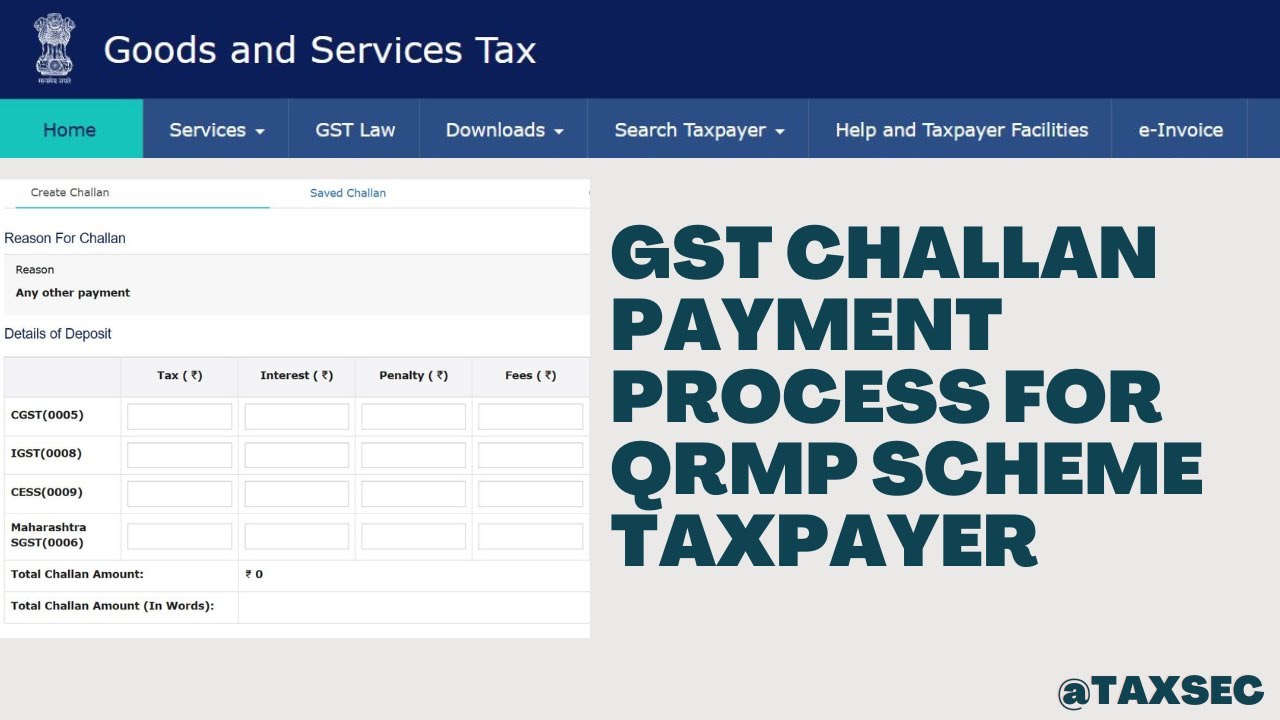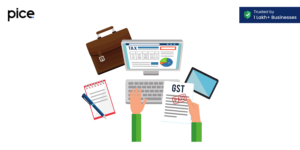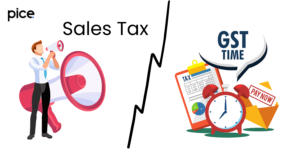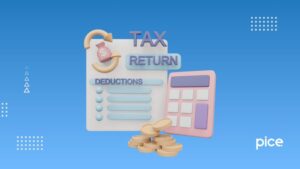Quarterly Return Filing of Taxes (QRMP) Scheme
- 5 Sep 24
- 10 mins
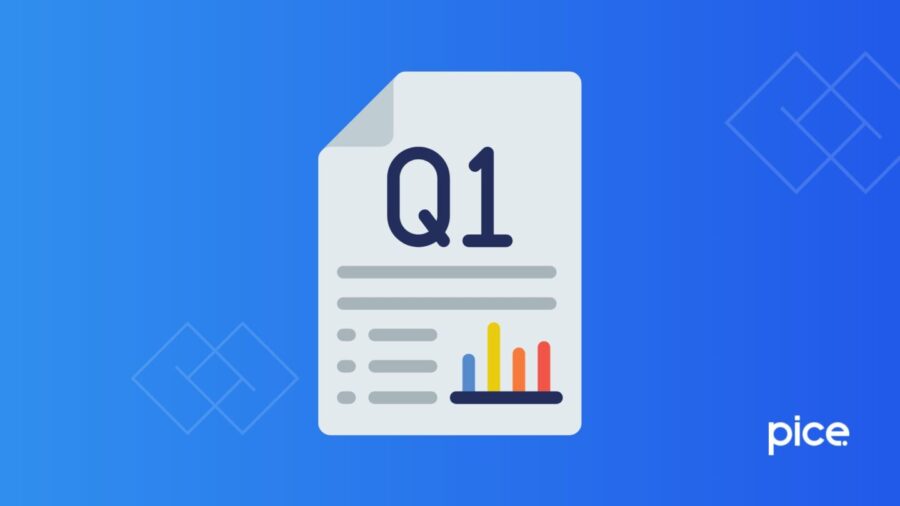
Quarterly Return Filing of Taxes (QRMP) Scheme
Key Takeaways
- The QRMP scheme allows small businesses with turnover up to ₹5 crores to file GST returns quarterly, reducing the compliance burden.
- Under the QRMP scheme, businesses can pay taxes monthly while filing GSTR-1 and GSTR-3B returns quarterly.
- The scheme offers two payment methods: Fixed Sum (35% of previous tax) and Self-Assessment, providing flexibility in tax management.
- Timely filing of quarterly GST returns is crucial to avoid penalties, with deadlines varying based on the business location.
- Newly registered taxpayers can opt for the QRMP scheme starting from the next quarter, depending on the month of registration.
The Quarterly Return of Tax Filing (QRMP) process is a great initiative to make GST return filing easy, ensuring business compliance. The scheme is designed for small taxpayers, allowing them to file their GST returns quarterly instead of monthly.
It further simplifies the process and helps companies better meet their tax obligations. Knowing the quarterly GST return due dates is important to prevent penalties and guarantee timely returns. In this blog, we will discuss the importance of the QRMP process and provide important tips for effective tax filing.
Understanding the QRMP Scheme
The Quarterly Return Filing and Monthly Payment of Taxes, also known as the QRMP Scheme, is a GST initiative that was introduced by the Indian government starting on January 1, 2021, to ease compliance for registered taxpayers through the quarterly GST return due date.
Thus, businesses whose annual turnover is up to ₹5 crores are now eligible to file GSTR-1 and GSTR-3B returns every three months instead of doing it monthly as per previous rules. However, they can still pay their taxes monthly through a simple challan. This scheme was introduced so that the compliance burden would be reduced while making business operations run smoothly without the headache of complex compliance.
Importance of the QRMP Scheme
Here is why the QRMP scheme is important for taxpayers, especially business owners:
- Small business owners should know about this scheme as it can help to reduce the number of returns they need to file each year.
- Another benefit is that the QRMP scheme reduces the financial burden on small business taxpayers by offering relief on interest and late fees for delayed submissions.
- You can also use the Invoice Furnishing Facility (IFF) which is optional in order to file four GSTR-1 returns on an annual basis and upload invoices for the first two months of each quarter instead of waiting until the end. This helps your buyers claim Input Tax Credit (ITC) more quickly.
Eligibility Criteria for the QRMP Scheme
If you are new to tax registration, have just registered or are leaving the Composition Scheme, you can still select the QRMP scheme. You are eligible for the QRMP scheme only under the following conditions:
- You can use this option only if you need to file Form GSTR-1 and Form GSTR-3B returns.
- Also, you need to file your last due GSTR-3B.
- Your aggregate income must be ₹5 crore or less in the previous financial year. If your turnover exceeds this threshold, it will not be eligible for the scheme in the following quarter.
- You should not have any saved data in Form GSTR-1 at the time of opting for the scheme. After deleting the reserved information in Form GSTR-1, you can opt for the scheme.
Steps to Enrol in the QRMP Scheme
Here are the steps to opt for the QRMP scheme:
Step 1: Log in to the GST portal.
Step 2: Go to ‘Services’ > ‘Returns’.
Step 3: Select ‘Opt-in for Quarterly Return’.
Step 4: Choose the option to opt in for quarterly returns.
For Previously Registered Taxpayers:
In case your annual turnover was up to ₹5 crores for FY 2019-20, you filed your GSTR-3B for October 2020 by November 30th, 2020, then you would be auto-migrated to the QRMP scheme for the January-March 2021 quarter.
Now, depending on the turnovers in the current financial year, a quarterly or monthly GST return filing option will be assigned. However, if you have not been transferred automatically you can enrol for the scheme once you meet the eligibility criteria.
In the current financial year:
- If your turnover is Rs.1.5 crores or less and you have filed GSTR-1 on a quarterly basis, you will be given the option to file GST returns on a quarterly basis.
- If your aggregate turnover is up to ₹1.5 crores and you filed GSTR-1 on a monthly basis, you will be assigned the GST monthly return option.
For the preceding financial year:
- If your aggregate turnover was between ₹1.5 - 5 crores, you will be assigned the GST quarterly return option.
For Newly Registered Taxpayers:
If you have registered during the first month of an entire quarter, you can opt for the QRMP scheme. However, if your registration has occurred in the second or third month of the quarter then you can only opt for the QRMP scheme starting from the next quarter.
For instance, if you register in April for the April-June 2024 quarter, you can avail yourself the QRMP scheme immediately. However, if you register in May or June, you will need to file GSTR-1 and GSTR-3B monthly until the next quarter.
QRMP Filing Deadlines
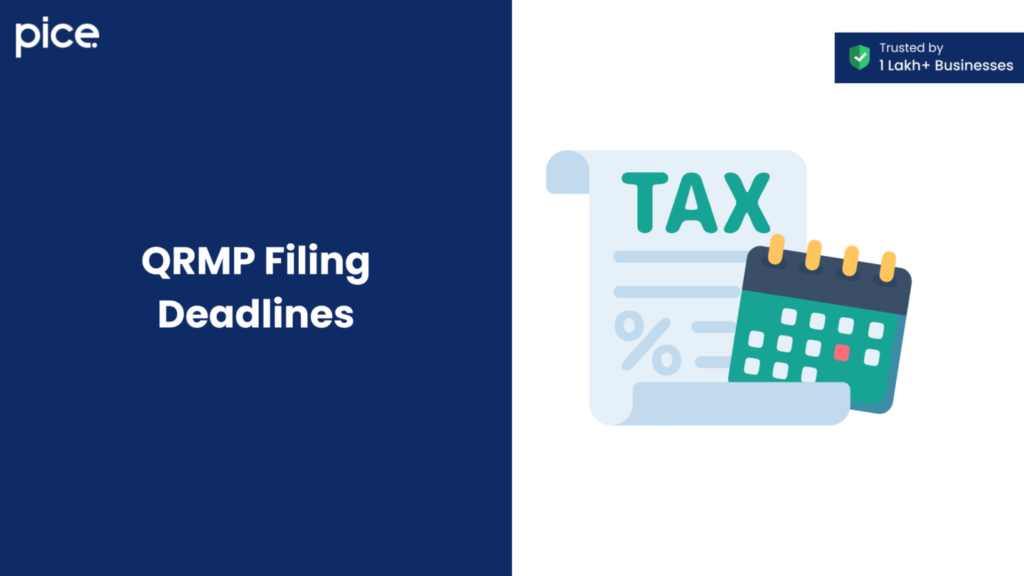
The deadlines for submitting GST refund applications will vary based on the particular refund category. The GST return filing dates from time to time are announced through different channels.
Based on those refund categories, for 2024, the essential GST calendar dates for filing returns under QRMP:
For taxpayers with an annual turnover of up to ₹5 crore opting for the QRMP scheme:
- Quarterly Filing:
For April-June 2024:
- Category X states/UTs: 22nd July 2024
- Category Y states/UTs: 24th July 2024
For July-September 2024:
- Category X states/UTs: 22nd October 2024
- Category Y states/UTs: 24th October 2024
GSTR-1 Filing Deadlines
For taxpayers with an aggregate turnover of up to ₹5 crore opting for quarterly filing the time limits are:
- April-June 2024: 13th July 2024
- July-September 2024: 13th October 2024
GSTR-3B Filing Calendar
- April 2024: 20th May 2024
- May 2024: 20th June 2024
- June 2024: 20th July 2024
- July 2024: 20th August 2024
- August 2024: 20th September 2024
- September 2024: 20th October 2024
Tax Payment Process under the QRMP Scheme
The Tax Payment Process under the Quarterly Return Filing and Monthly Payment (QRMP) Scheme is designed to simplify tax payments for small business taxpayers. If you are enrolled in this scheme, you will need to pay taxes for the first two months of each quarter using Form PMT-06, which generates a payment challan. The payment time limit for each month is the 25th of the next month.
You have two types of return filing processes for making these payments:
- Fixed Sum Method
Taxpayers can settle their monthly tax liability using the Fixed Sum Method or FSM, also known as the 35% challan method, by paying 35% of the previous quarter's tax if filed quarterly, or the last month's tax if filed monthly.
- If you filed your last GSTR-3B return quarterly, you can opt for a pre-filled challan that calculates 35% of the tax that was done as a cash payment during the previous quarter.
- In the case of monthly filing of GSTR-3B, the pre-filled challan will reflect the full tax amount paid in cash for the last month of the previous quarter.
- However, if you are a new taxpayer, have not filed your last GSTR-3B, or recently opted out of the Composition Scheme, this 35% option will not be available.
- Self-Assessment Method:
This method allows you to calculate and pay the actual tax due based on your inward and outward supplies while you claim the Input Tax Credit (ITC) that is available.
The taxes you pay during the initial two months can be used to offset any liability when you file your quarterly GSTR-3B return. This system offers flexibility and helps manage your tax payments efficiently.
The Bottom Line
It is comparatively easier to comply with GST regulations when you understand how the tax payment takes place under QRMP. Effective management of your tax liabilities will then be possible by applying an appropriate payment method, Fixed Sum or Self-Assessment. Do ensure that you note down the quarterly GST return due date to file within time and save yourself from penalty.
This will not only make tax management easier but also help keep you up to date with GST compliance so that your business practices are on track along with managing the cash flows.







